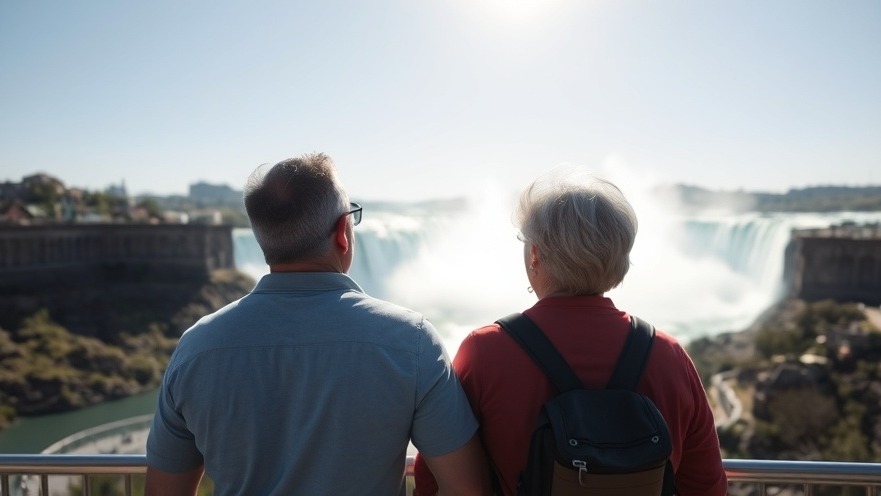
Enjoying Summer Without Compromising Health Goals
As summer sun beckons us outdoors, many suburban professionals aged 25-50 may find themselves worried about maintaining their health goals while indulging in well-deserved vacations. The good news is that achieving this balance is not only possible but can also enhance the overall enjoyment of your trips. In this article, we'll explore some modern and actionable strategies to help you enjoy your summer while staying on track with your wellness journey.
Stay Hydrated for Optimal Health
One of the simplest yet most effective ways to maintain health during summer travels is by staying hydrated. Travelling often leads to long days of exploration and outdoor activities, which increase the need for water. Reminding your patients to carry a reusable water bottle can play a crucial role. Neha Vyas, MD, emphasizes, "Staying hydrated not only helps stave off thirst— which is often confused with hunger—but also boosts energy levels and enhances overall mood, making your vacation more enjoyable." Keeping hydration a priority can also curb cravings for unhealthy snacks.
The Importance of Quality Sleep
Sleep is often sacrificed during vacations, leading to fatigue and increased appetite. For those traveling, quality sleep can be elusive, whether it’s a night in a hotel or camping in nature. Dr. Vyas suggests that travelers should prepare by bringing earplugs and sleep masks to ensure they get the rest they need. "Good sleep is essential for preventing overeating and enhancing mood," she explains. Simple changes, like establishing a routine and creating a calming sleep environment, can greatly improve sleep quality when traveling.
Finding Opportunities for Physical Activity
Incorporating physical activities into vacation plans is another effective strategy for maintaining health. Whether it's a family bike ride, a long walk throughout a new city, or engaging in local sports, being active not only burns extra calories but also creates meaningful memories. "Encourage patients to explore their destinations actively, be it on foot or by joining outdoor fitness classes available at many resorts," suggests Dr. Vyas.
Planning Meals for Balance
Travel often revolves around food, which can make or break a health-conscious vacation. Integrating meal planning into travel preparations can greatly aid in upholding health goals. Knowing which meals to indulge in ahead of time allows travelers to keep other meals healthier. "The key is moderation—counterbalancing heavy, calorie-laden meals with lighter, nutrient-dense options," Dr. Vyas notes. By being strategic about meal choices, travelers can enjoy local flavors without derailing their health plans.
Navigating Alcohol Consumption Wisely
Alcohol is frequently present at summer gatherings and vacations, and managing intake is crucial for health. It’s important to discuss alcohol's potential effects on hydration and sleep quality with patients. "If enjoying a drink, it's vital to balance it with increased water intake to avoid dehydration and fatigue," comments Dr. Vyas. This level of awareness can drastically improve vacation experiences.
Special Considerations for Patients on Medications
For patients taking GLP-1 medications, there are additional considerations while traveling. Understanding how to store these medications properly is critical, especially in varying climates. Patients should ensure their vacation accommodations can maintain suitable conditions for their medications, thus avoiding potential health risks.
Encouraging a Positive Mindset
Perhaps the most significant insight for maintaining health goals during summer vacations is adopting a positive mentality. By reminding patients that a few indulgences won’t hurt their long-term health, they can discover the joy of balance. Fostering enjoyment alongside health belief systems empowers patients to engage without guilt.
Conclusion: Embrace the Health-Travel Balance
As summer vacations approach, implementing these strategies can bring about an enriching travel experience that promotes health and wellness without compromise. Encouraging hydration, quality sleep, physical activity, meal planning, and mindful drinking can make for an enjoyable getaway. Embrace this opportunity to indulge while still prioritizing health—after all, vacations are meant for both adventure and rejuvenation. If you’d like to learn more about maintaining health during travels, feel free to connect with your health provider for personalized strategies!
 Add Row
Add Row  Add
Add 




Write A Comment